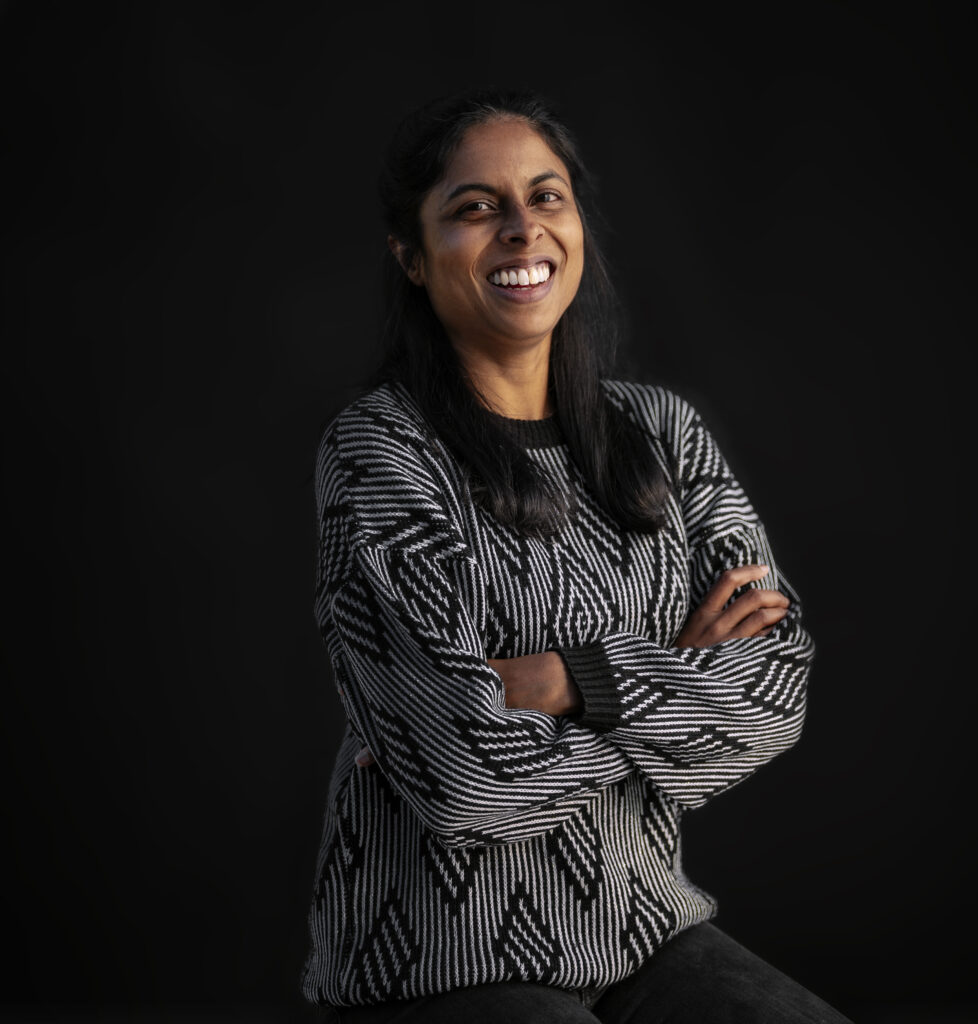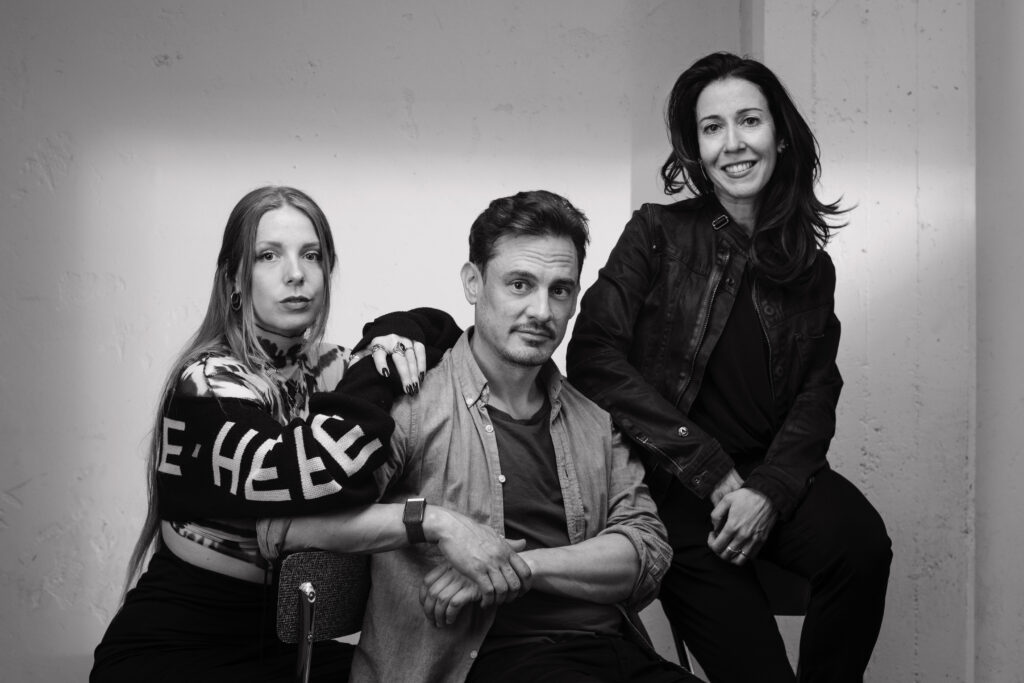We spoke to Nirmala Shome, Head of Community at The Fabricant, about how digital fashion is inspiring a community driven revolution.
Nirmala Shome is the Head of Community at The Fabricant—a digital fashion house that creates digital garments for AR and the metaverse. Focusing on community co-creation, The Fabricant aims to turn fashion on its head using digital design—and by giving fans the designer brush.
Digital fashion—and digital fashion houses like The Fabricant—are a new concept to a lot of people. How would you describe it to people who are not familiar with this concept?
The way I’d describe it, we’re a decentralised fashion house. And we’re really on a mission to create a decentralised fashion ecosystem, a digital-only fashion hyper-structure that we will build together with our community.
It’s funny. I think I often change how we describe what we do, because the whole culture in Web3 changes so quickly. It is still so early in the industry that we’re often getting pulled in many directions. We have these moments
where it shifts, and we have to realign things that we thought we had sorted
out previously.
But, no matter the shifts in the industry, our core focus at The Fabricant is always to support creators and create a platform and ecosystem where they are all equitable.
What do you mean when you say The Fabricant is a ‘decentralised’ fashion house?
To understand what decentralisation means for us, you have to look at the traditional fashion industry and the way it works. It starts with a label or a fashion house that dictates trends at a high level—at probably quite a high price-point as well, making it quite inaccessible. It then trickles down into larger consumer markets that people can access.
We’re trying to reverse the existing fashion-industry structure, and build something new. We are starting from the ground up. When we launch a collection, it’s all about co-creation, it’s all about trends coming from the community.
But in terms of what we actually do, we make digital-only garments and we work with different fashion designers to create them. We have a platform where you can come and mint them. Minting is the act of making it an official NFT. On our platform, people are able to design a unique fashion item, and no one else can make that combination through our platform again.
“We’re trying to reverse the existing fashion-industry structure, and build something new.”
We are now also working on developing a marketplace where you can trade them—as well as looking at how you can bring them into different metaverses, and on how you’d wear them.
Why do you think subverting the whole industry is worth pursuing? What do you think is the benefit to the community?
To be a traditional fashion designer, you generally have to go to fashion school. In the digital space, there are even more barriers to entry, in the sense that you need all these different softwares and knowledge of how to use them.
At The Fabricant, we want anyone to be able to design. We’ve been really building our community of fashion designers since the company started. And now, we’re creating a tool that’s an easy-to-use platform to create and design your own custom items. You come up with ideas and concepts that other teams execute on. We’re trying to make the design process as accessible as it can be.

Do you see major differences between how the community creates, versus how a fashion house creates?
Yes. We give everyone the palette and the tools—and then the trends emerge through the community’s co-creation. For example, our Season One collection or the one we recently did with Stephanie Fung: it’s not one entity that creates the collection, but several designers creating a palette for a collection to emerge.
When you entered The Fabricant [digital] studio, you basically were given these garments. You could pick material from an artist, create this colour palette and create a unique item. But that item that you’ve made is actually the combination of a different garment designer, a different material designer and your own creative input.
The outcome is that the community tells us what the most popular fashion trend is, as opposed to us saying, “Yellow is the colour for this season”, or, “It’s pink this season”. What’s really interesting is that we don’t actually know what the most popular fabric is. When we see all the data in the end, that’s when we know what the trends are.
“The community tells us what the most popular fashion trend is, as opposed to us saying ‘yellow is the colour for this season’ or ‘it’s pink this season’.”
As the Head of Community, what role do you play within the company?
The community is a critical part; you can’t really think of The Fabricant as existing without our community. This is a movement, and in a movement you need many, many people. I’d say that’s the same for any artist—your fans or the people that follow you are an inherent part of what you do. You’re all kind of deeply connected, and it allows you to create a much deeper, more direct relationship.
Our goal at The Fabricant is to create an ecosystem that can house all these different people in one place. My role is to create a healthy community. When you think about what makes a healthy ecosystem, diversity is so critical, as well—making sure our community is diverse.
We also look at what the environment is, and at tools such as Discord, Twitter and Twitch streams. We think about how we can connect all these tools so they function well. A well-organised Discord is critical infrastructure that we need to work on. Discord is a private platform where we all meet, chat and share projects with each other. We design it as a space for the community to thrive.
Do you ever look to fan bases within other industries like music or sport for inspiration on The Fabricant’s community model?
I think the eSports model is a really interesting community model. You have your [game] builders—or the people that design the games. Then there’s people that come and play those games. Then you have the people that watch people play the games—who we call spectators. But the spectators are a huge part of that economy, and bring in huge value.
We have the same type of structure with our fandom. But for us, it’s probably a little bit more active than passive, as with a spectator. We’re creating a platform for people to come and build, and designers can come and put their designs on the platform. Players and co-creators can come and create this next layer of items, which they can merchandise, sell and wear. Then, there’s all the people that are just here to watch, experience and give it a try.

We make sure there’s always a path for each of those groups to have something to do—to have a way to engage that brings value.
It’s clear that those active within The Fabricant community see themselves as either fashion designers or fans in some way. But when it comes to financial incentives, do they also see themselves as fashion ‘investors’?
Some might come for the money, but it’s not the reason they stay. It’s not like coming to buy or profit, and that’s where the relationship ends. When someone co-creates, it’s a piece of themselves as well. When you co-create you will receive royalties. But beyond that, we always think, ‘How can they give back to our community’?
For us, we really need to think about what goes beyond the financial. What I love seeing in our community is that people will come and share a bit about themselves, or their real-life story, or why they’re here. Some of them came from the fashion industry and hated it. Now, they’re making their lives a part of our community.
What gets you most excited about the shift to Web3, and the opportunities it unlocks for fans?
“Being a fan now in Web3 canbe a legitimate career.”
I think one cool thing is that being a fan now in Web3 can be a legitimate career. You could be a fan, and get paid to be one, and earn money in a very tangible way that wasn’t possible before—now you really can do that. You can just be a fan and find a way to live off that.


No Comments.